In the tallgrass and mixed-grass prairies, a large number of mid- to late-spring-blooming native wildflowers provide visual interest long into winter, while being incredibly drought-tolerant and a boon to early-season pollinators like native bees. Who needs non-native bulbs when you have these beneficial perennials?
Not in the Central Plains? Browse plants native to other regions of the U.S.
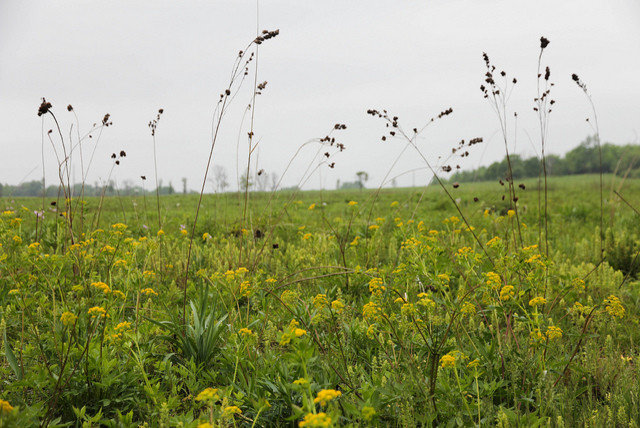
Cassi Saari
1. Golden Alexanders (Z
izia aurea)
Native from North Dakota south to Texas and east from Maine to Florida
Golden Alexanders is an adaptable plant for full to partial sun, preferring dry to moist soils. This herbaceous perennial is a host plant for black swallowtail butterflies and a boon for small, early-season native bees, which you’ll see in droves during its mid-to-late spring bloom. Reaching about 2 to 3 feet tall and 1½ feet wide, this plant won’t disappoint.
See how to grow golden Alexanders
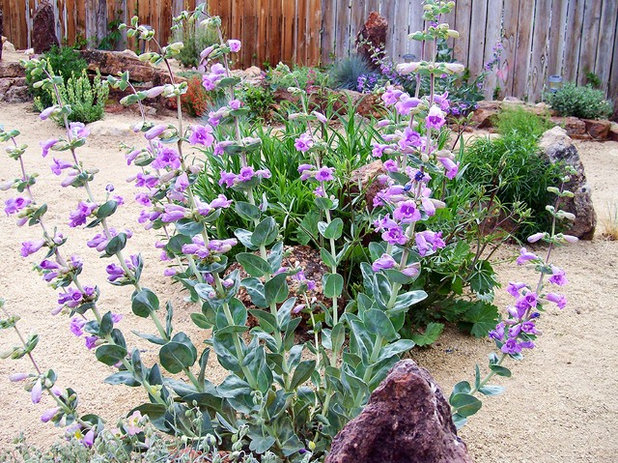
Sierra Rain Shadow
2. Large Beardtongue (
Penstemon grandiflorus)
Native from eastern Montana to Wisconsin and northern Illinois, and south from New Mexico to Texas, where its populations are more scattered
If you have dry clay, sand or gravel, large beardtongue, with its big purple flowers, will attract hummingbirds and bumblebees from mid-to-late spring. Large beardtongue prefers full sun, reaching about 2 to 3 feet tall and 1 foot wide. Smooth blue-gray leaves on the stems lend a coolness to the garden.
See how to grow large beardtongue
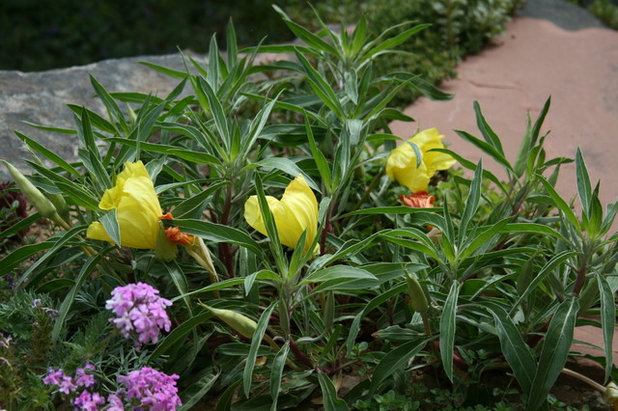 3. Bigfruit Evening Primrose
3. Bigfruit Evening Primrose (
Oenothera macrocarpa)
Native from southern Nebraska to Missouri south through Oklahoma and Texas
You’ll relish bigfruit evening primrose’s flowers, which bloom for just one day. Reaching 8 to 12 inches tall and wide, evening primrose prefers full sun and a dry, sandy, even rocky, soil. It can do fine in fertile clay or loam if it’s well-drained. Sphinx moths are a main pollinator.
Photo by Patrick Standish
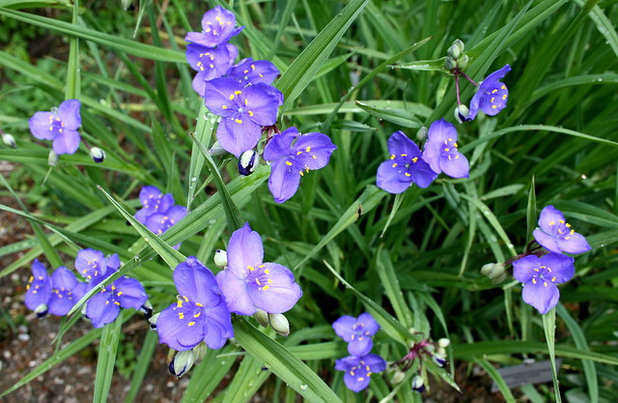 4. Prairie Spiderwort
4. Prairie Spiderwort (
Tradescantia occidentalis)
Native from Montana east to Minnesota and south from Arizona to Louisiana
Thriving in dry, infertile soils in full sun, this perennial can reach 2 feet tall while in bloom from late spring to midsummer. If you put prairie spiderwort in loamy soil that gets adequate moisture, it will spread aggressively. The foliage resembles that of a daylily and can be used for textural interest in the landscape. Also look at the shorter longbract spiderwort (
T. bracteata), which ranges from North Dakota and Minnesota south to Oklahoma and Arkansas.
Photo by Jean-Pol Grandmont
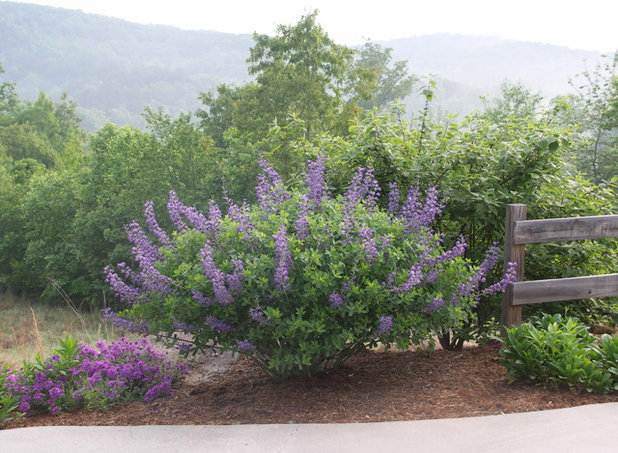
Earth Design, Inc.
5. Blue Wild Indigo (
Baptisia australis)
Native from the central Great Plains to the northeastern and southeastern U.S.
Blue wild indigo is extremely drought-tolerant and thrives in a variety of soils in full sun. It reaches 3 to 4 feet tall and wide with a deep taproot. If you’re looking for a shorter indigo species, try
B. australis var.
minor. Queen bumblebees eagerly seek the flowers each May when they’re starting their colonies. Blue wild indigo is a host plant for several sulphur butterfly species.
See how to grow blue wild indigo
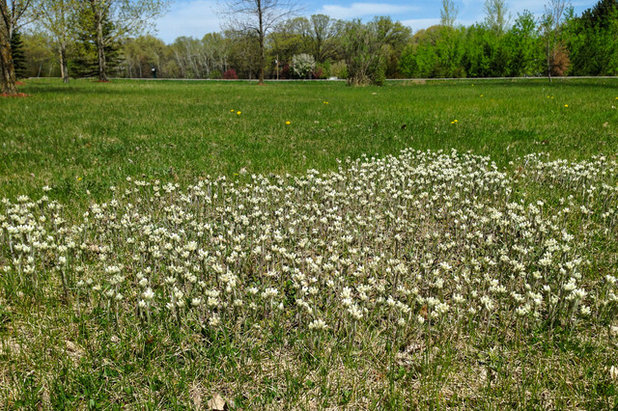
Holm Design & Consulting LLC
6. Field Pussytoes (
Antennaria neglecta)
Native from Montana east to Maine, and from Colorado and Oklahoma east to Virginia and North Carolina; native in Canada from British Columbia east to Quebec, Nova Scotia and Prince Edward Island, as well as the Northwest Territory
The silvery foliage of field pussytoes grows only a few inches tall, while white blooms reach up to about a foot tall in mid-to-late spring. This perennial prefers dry, sandy soil and will perform well in a rock garden setting. Host to the American lady butterfly, field pussytoes will spread moderately over time, becoming one component of a lawn alternative for a wilder area.
See how to grow field pussytoes
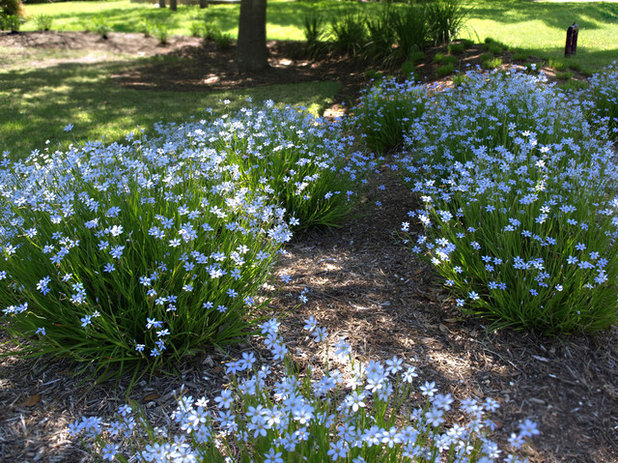
Pearson Landscape Services
7. Prairie Blue-Eyed Grass (
Sisyrinchium campestre)
Native from South Dakota to Wisconsin south to Louisiana and eastern Texas
This ground cover resembles an iris, to which it’s related, and flowers in late spring to early summer in full sun, to the delight of early-season pollinators. Prairie blue-eyed grass prefers dry to medium soils and grows from 6 to 12 inches tall.
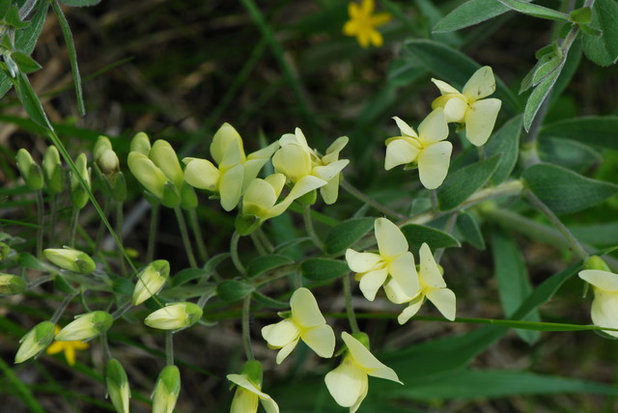 8. Longbract Wild Indigo
8. Longbract Wild Indigo (
Baptisia bracteata)
Native from Nebraska and Minnesota south to Texas and Louisiana, and east to Illinois and North Carolina
Longbract wild indigo blooms in mid-to-late spring, reaching 2 feet tall and 2 to 3 feet wide. It grows best without tall competition and has hairy leaves on stems that spread, weep or arch out from the plant’s center. Like other
Baptisia, longbract wild indigo prefers full sun or a bit of shade, has a deep taproot and adapts to various dry soil sites, from clay to loam to some sand. It’s a host plant for several moth and skipper butterfly species.
Photo by Joshua Mayer
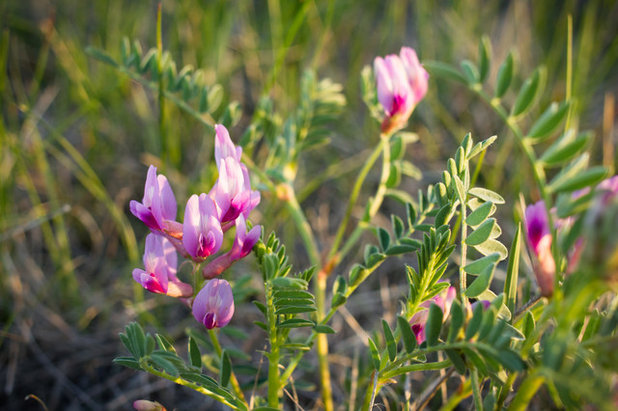 9. Groundplum Milkvetch
9. Groundplum Milkvetch(
Astragalus crassicarpus)
Native from Montana east to Minnesota and south from New Mexico to Louisiana
Groundplum milkvetch is a textural stunner that can be used as a ground cover in dry soil in full sun. The plant itself is only about 1 foot tall and wide, blooming in mid-to-late spring. Its red fruits are as large as 1 inch across and resemble plums when ripe.
Photo by Justin Meissen
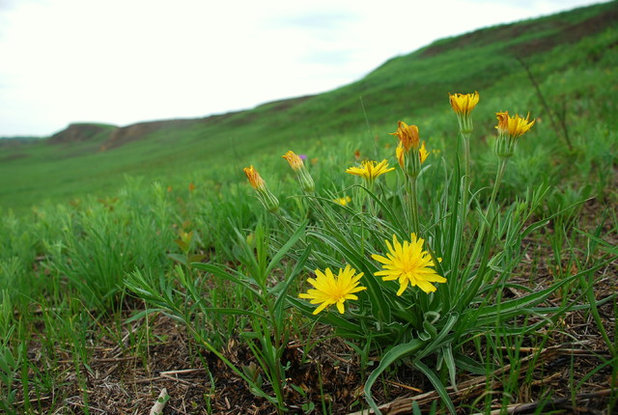
Sarah Bailey
10. Prairie False Dandelion(
Nothocalais cuspidata, formerly
Agoseris cuspidata)
Native from Montana east to Wisconsin and Illinois, and south from Colorado to Missouri
We have a native perennial dandelion. Prairie false dandelion likes the same dry, hot inhospitable situations the non-native dandelions prefer, but its foliage is more daylily- or lance-like. Standing up to 1 foot tall, it attracts many hungry pollinators when it blooms in early-to-mid spring.





